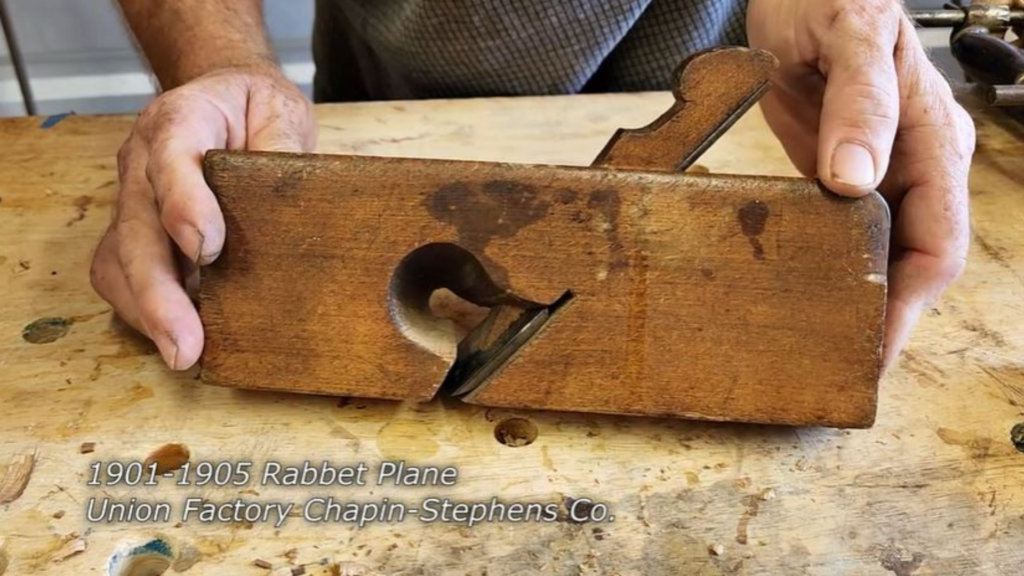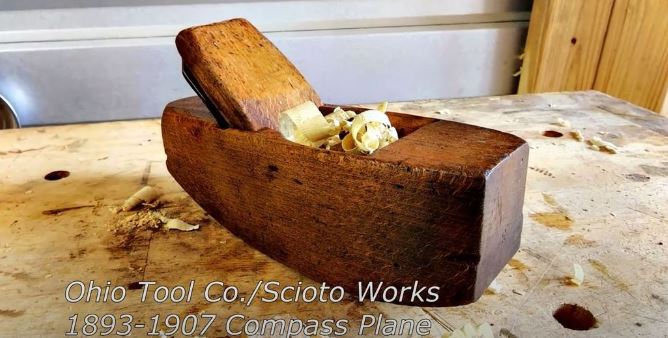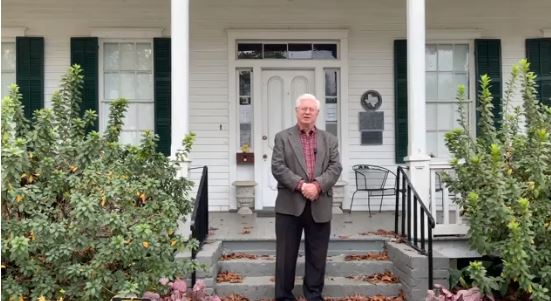About the Video
Handcrafted by GR Broussard – Tomball Museum Series, Episode 2, 1901 – 1905 Rabbet Plane
From Handcrafted by GR Broussard: 1 1/2 inch rabbet plane manufactured by Union Factory Chapin-Stephens Co. 1901-1905.
What is a Rabbet Plane
A rabbet plane is, by definition, a plane designed to cut rabbets (also known as “rebates,” particularly in Great Britain) in the edges or ends of workpieces. To enable them to do so, the plane iron is milled to a size slightly greater than the width of the plane body. This means that the cutting surface extends beyond the sides.
Source: Bob Vila, https://www.bobvila.com/articles/2092-rabbet-planes/
About Chapin-Stephens
From the Making Places of Connecticut website, connecticutmills.org:
The following information is from the Making Places of Connecticut website at connecticutmills.org:
- The Chapin-Stephens Company was originally established in 1828 by New Hartford, Connecticut resident Hermon Chapin.
- Chapin initially manufactured wooden planes, yet began producing carpenters’ rules in 1835.
- The company’s plant was located in a bend in the Farmington River in the Pine Meadow section of New Hartford
- Chapin created an industrial village consisting of a substantial mill complex and dozens of houses for his employees
- In 1854, Chapin’s son Edward assumed the role of superintendent of the firm.
- Six years later, Edward’s two brothers, George W. and Philip E., likewise joined the company, which was then reorganized as H. Chapin and Sons.
- This arrangement continued until Hermon Chapin’s death in 1866.
- H. Chapin and Sons was reorganized following the death of the elder Chapin as Edward bought out his two brothers and formed the E.M. Chapin Company.
- Philip went on to form the Chapin Machine Company, which manufactured sewing machines in a mill to the southwest of the rule and plane plant.
- The E.M. Chapin Company continued to operate under the management of Edward Chapin until his death in 1897.
- The firm, by then one of the most prominent manufacturers of wooden hand planes and other tools in the country, then passed to Edward’s sons, Hermon and Frank, who formed a joint stock company under the moniker of H. Chapin’s Son and Company.
- This was led by Rufus E. Holmes, who oversaw the firm’s merger with the Riverton, Connecticut-based Stephens Company – the initial founder of which, Delos H. Stephens, having been trained in the manufacture of rulers by the elder Hermon Chapin ¬– between 1900 and 1902.
- The resultant Chapin-Stephens Company continued to operate until 1929, whereupon the plant was acquired by the Stanley Works of New Britain, Connecticut.
- The substantial Chapin-Stephens Company plant was largely demolished between 1934 and 1951, perhaps as a result of damage incurred during the 1936 Flood.
- Two other plants immediately to the southwest, these formerly occupied by the Chapin Machine Company and the D.B. Smith Sons Company, a manufacturer of cotton duck, were likewise removed during this period and little evidence of their existence remains at the present time.
- The Stanley Works preserved several buildings previously occupied by the Chapin-Stephens Company, yet discontinued the manufacture of wooden planes in order to focus on rule production.
- The plant was substantially enlarged during the 1960s, yet was vacated by Stanley Works during the late-20th century.
source: https://connecticutmills.org/find/details/chapin-stephens-co



